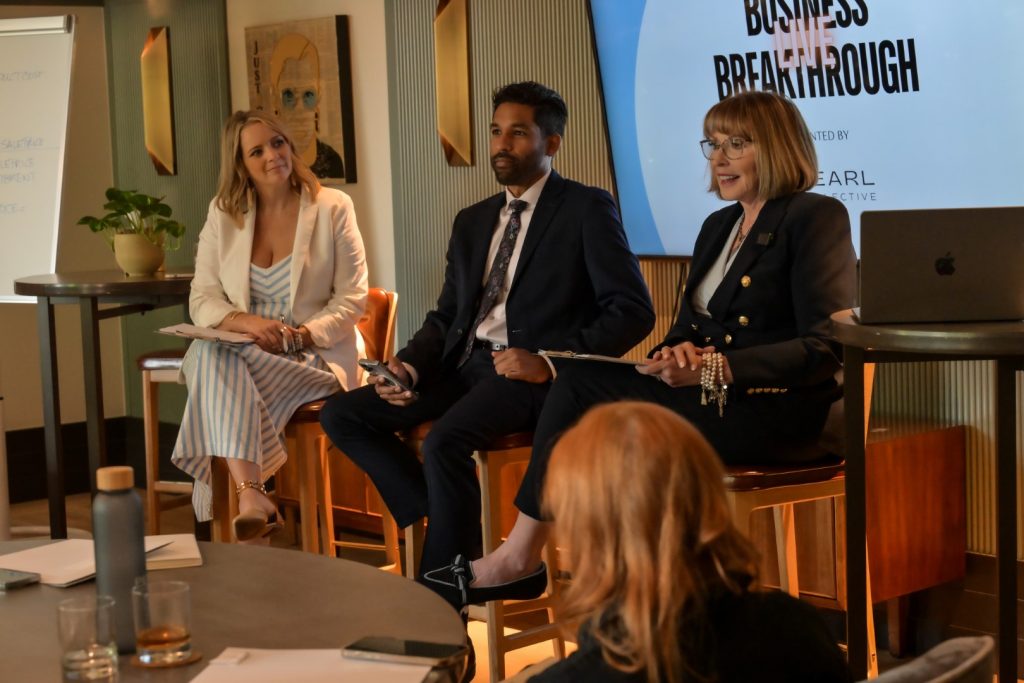As the leader of your company are you a conscious or an unconscious leader? It’s an important question to ask yourself. You may feel that you make a conscious effort to be a good leader – but does that qualify you as a conscious leader? The Conscious Leadership Group (CLG), consultants to numerous companies and organizations, address that in their book The 15 Commitments of Conscious Leadership. They identify conscious leaders as “leading above the line”. Whereas unconscious leaders lead from “below the line”. Leading above the line is being open, curious, and committed to learning – being proactive. Below the line is being closed, defensive, and committed to being right – being reactive.
Conscious leaders focus on the context – how a conversation is occurring – over the content. In other words, what is actually being said in the conversation. Finding a positive, creative solution to a problem is more likely if you do not react in anger and instead listen beyond just the words being said.
To move from unconscious to conscious leadership, make a shift from being a “To Me” leader to a “By Me” leader. You are shifting from being a victim to taking responsibility. This is a shift from having to be right to being curious and open to learning. Focus on how that can help the success of your business and your life.
Understand that this process is ongoing but that your decision to become a conscious leader means you are willing to become a lifelong learner. Below is a roadmap to follow on this path. Keep in mind that developing the commitments of conscious leadership will positively affect the culture of your team and therefore the success of your company.
1. Commit to Curiosity
Conscious leaders put curiosity above having to be right. A “To Me” attitude is defensive and closed. That negative attitude is easier to understand when you realize that being right is connected to survival. Our brains automatically connect to survival instincts. That survival relates not only to our physical well-being but also to our egos!
Think about the time and effort involved in below-the-line behaviors and you’ll understand why unconscious leaders are less effective in business. Whereas conscious leaders focus that time and effort on learning through curiosity. Changes don’t happen overnight and those below-the-line attitudes are a natural survival instinct. So accept that sometimes you will drive below the line. The difference is that a conscious leader will be aware when that happens and stop and make a conscious effort to reverse course. The shift will first be physical as a defensive attitude tenses up your body. When that happens, relax your posture and take a deep breath. Once you make the physical shift, the mental shift will follow, and you will enter a state of wonder – a state that many lost in childhood.
Above-the-line leaders are curious and address every interaction as an opportunity to learn. They understand what they know and are interested in learning what they don’t know. They are also fascinated with what they don’t know they don’t know! Additionally, they open themselves to both verbal and non-verbal feedback.
On the journey to becoming a conscious leader, put your commitment to learning over being right. Develop a list of “wonder” questions and be sure to share them with your team as you help develop a team of conscious leaders.
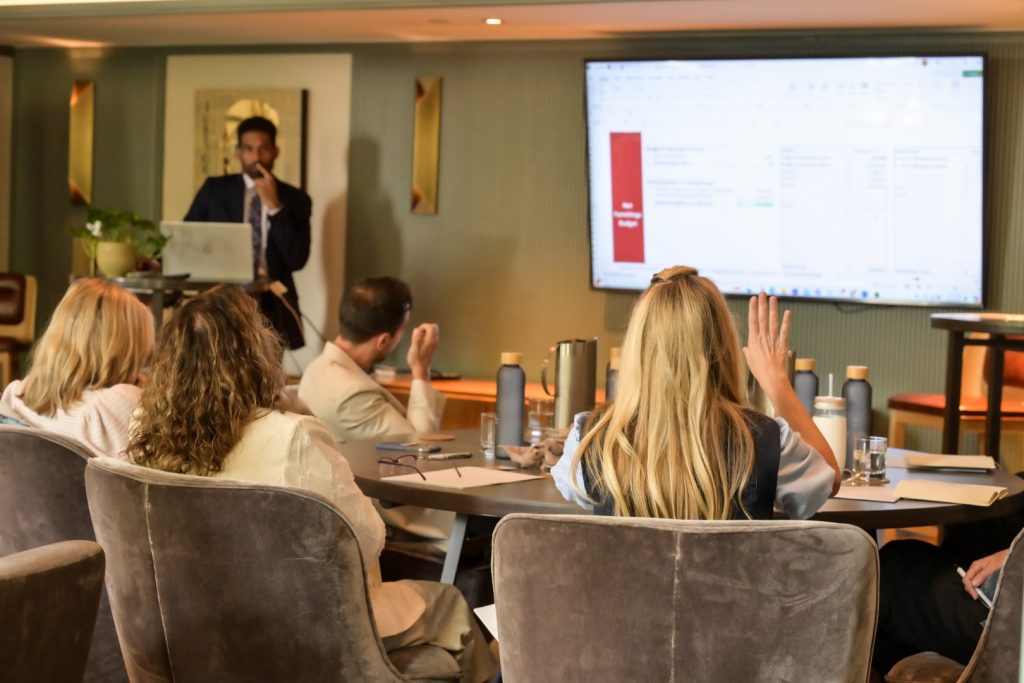
2. Sustaining Leadership Success Through Emotional Intelligence
On the road to conscious leadership realize that great leaders know the value of going beyond their head (IQ) and instead include all 3 centers of intelligence – the head, the heart, and the gut. To quote psychologist Daniel Goleman, “What really matters for success, character, happiness and lifelong achievements is a definite set of emotional skills – your EQ.” This goes beyond your purely cognitive abilities that are measured by traditional IQ tests.
According to CLG, reaching emotional “literacy” involves 2 steps. Developing a clear, accurate definition of emotion and then identifying the core emotions.
CLG defines emotion as “e-motion” – energy in motion – physical sensations. Using this definition should help remind us that feelings just happen – it’s not good or bad – it just is. Feeling feelings isn’t bad, but acting on them inappropriately can be.
For the second step of identifying the core emotions, they used a comparison to which designers can easily relate. All colors come from 3 primary colors. They submit that there are 5 primary emotions – anger, fear, sadness, joy and sexual feelings. Each emotion is connected to a unique set of sensations on the body. Just as primary colors can be combined to create additional colors, so can emotions be a combination of two or more of the primary emotions. Each of these emotions creates a unique sensation in and on the body and the key is to identify the emotion connected to that sensation. Then express it through to completion/release to begin to develop emotional intelligence.
- Anger tells a leader something must be changed or eliminated so something more positive can replace it.
- Fear alerts leaders that something important needs to be known. That might be an oncoming danger or that something new needs to be implemented.
- Sadness tells leaders that something needs to be released. That might be old ideas, people, projects, and/or dreams that have served their purpose.
- Joy tells the leader that something needs to be celebrated. Some leaders may not create a culture of celebration and appreciation because they can’t experience joy. They unconsciously limit anything that might be celebratory.
- Sexual feelings in leadership relate to the energy of creativity and creation. CSG suggests thinking of a leader and a team that is pregnant with ideas and innovations.
Conscious leaders are able to fully experience emotion, completely release it and then quickly learn from it. These 3 benefits can be transformational. Commit to feeling your feelings through to completion.
3. Management Skills vs Leadership Skills
Management skills and leadership skills complement each other but they do not involve the same skillset.
Leadership skills include the ability to influence, inspire and motivate people to see the vision and reach the goal. These skills contribute to the success of the company.
On the other hand, management skills involve the ability to manage people and resources successfully. This ability allows the company to successfully deliver a service or product.
Both skillsets are important for the success of a business. But be aware that you can learn management skills, whereas you need to develop leadership skills. As stated by Steven Covey: Effective leadership is putting first things first. Effective management is discipline or carrying it out. Management relates more to the processes and procedures – leadership tends to be more about personality and experience.
As the leader of your firm, you need to have a vision as well as the ability to inspire and motivate your team. You also need to use those skills to influence and inspire your clients to move forward with their design projects. You must be a visionary, able to “paint that vision” for your clients and your team. An effective leader can’t be passive, they must be active.
As you grow your business it might be time to hire a manager. They can follow and execute your vision for your firm. The leader is the visionary, and the manager works in the present to make sure that your firm reaches your vision. As a leader you shape the firm’s culture, and the manager works with the rest of the team to support that culture. To quote Warren G. Bennis, “The manager asks how and when; the leader asks what and why.” The success of your firm depends on having a visionary, inspirational leader with an effective, well-organized manager.
4. Candid Communication Leads to Successful Teams
Conscious leaders, with their teams, realize that one key to success is honest open communication – which leads to seeing reality clearly.
Research shows a problem with many firms/organizations is a lack of candor. Your team may withhold facts, thoughts, feelings, and sensations to avoid hurt feelings, to avoid conflict, or because they feel like it won’t make a difference.
If, however, you create an atmosphere of speaking candidly at your firm then it means no one will “withhold”.
Often “withholding” causes a decrease or complete blockage of energy necessary for individual and team creativity. Conscious leaders understand the value of creating an atmosphere and culture of openness and honesty in their firm. They nurture a culture of conscious relationships. Each team member understands how to be candid without projecting on others. Those team members are then able to turn those projections into curiosity – creating wonder questions that show openness to learning.
Three overlapping circles are necessary for practicing candor: truthfulness (accuracy), openness (the complete truth), and awareness (self-awareness).
The key to effective communication – speaking with candor – is to learn to do so with truthfulness and unarguable statements: “I feel…”, I’m having the thought that…”. Don’t make statements that can be debated, like stating something as fact. Truthfulness means speaking in a very caring way and does not mean blunt attack mode!
Committing your team to candor goes beyond speaking candidly to include consciously listening. Listen to what you hear them saying, then repeat back what you heard to confirm accuracy. Also listen to the emotions expressed and reflect those back for confirmation. Finally listen to your gut to be aware of what they really want. Encourage openness with your team to give candid feedback – in writing or in person. Assure them they don’t need to be right but just need to share.
This type of candid communication highlights the key role your culture plays in your business and how you hire and build your team.
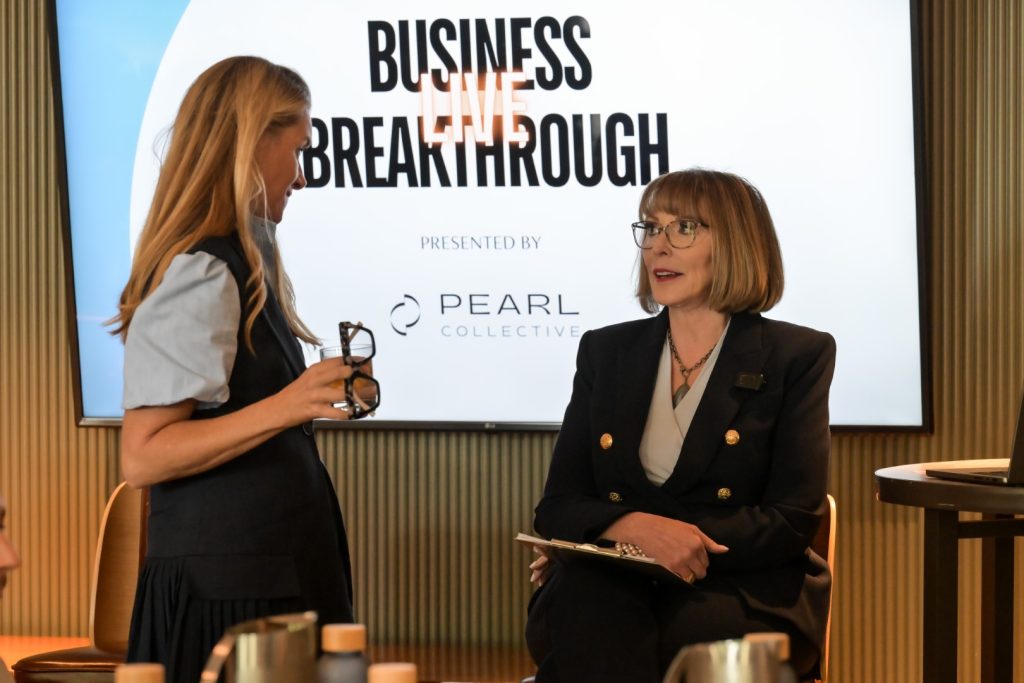
5. The Lure of Gossip
Whether you are a single practitioner or have a team, gossip is a key indicator of an unhealthy company culture. Engaging in stories about others uses a great deal of mental and emotional energy. That energy could be more productively used to create positive solutions and move your business forward.
Gossip is part of our culture and can also become an accepted activity in many businesses or organizations. CLG defines gossip as any statement made about another with negative intent. Also included is any statement about another that the speaker would not be willing to say to their face. Those who listen to gossip without taking action against it are also responsible.
When you find yourself gossiping ask yourself: Are you not willing to tell the truth to that person? Or do you not know a healthy way to release negative energy? Or, more commonly it could be because it takes too long to thoughtfully process the information and feelings and share them with that person.
Gossiping can become addictive. People can get addicted to proving others wrong, to gain validation, to control others, to get attention, to divert attention from themselves or to avoid conflict.
If you start going down this path, ask:
- Is there negative intent? If so, you are gossiping.
- Would you be willing to say the same thing in the same way directly to the person involved? If no, you are gossiping.
It is important to separate fact from story. Fact excludes opinion, assumption, judgments, motivations, etc. In addition to separating fact from story it is important to be open and curious enough to listen to both and hold an open and honest discussion. It is also important to be sure each party is clear that what they heard is what the other person said.
This is a very important subject to address with your team and to create a culture where your team realizes the value of replacing gossip with a focus on creative energy and productive collaboration.
6. Are You Really Practicing Integrity?
Are you really practicing integrity? Or are you just paying lip service to the word? You may define integrity as acting ethically or doing the right thing, but CLG describes it as “facilitating the flow of energy.” They describe integrity as a combination of three elements: energy management, congruence, and alignment. Think about times your team is performing at its peak and you probably will be able to sense positive energy, enthusiasm, and creativity.
The CLG goes on to share what they call four pillars of integrity:
- Take 100% responsibility
- Speak authentically
- Feel feelings through to completion
- Impeccable Agreements
The first three have been addressed in the above segments, but let’s look at an “agreement”. It is anything you have promised you will do or anything you have said you will not do, and it exists between two or more people. Agreements can be verbal – telling a client you will get back to them before the end of the day. Or it can be a written agreement with that client. An agreement can also be with yourself – agreeing to go to the gym 3 times a week – and is just as important to integrity. It is not a commitment, which is more general. An agreement includes who will do what and by when.
An “impeccable” agreement requires mastering four practices:
- Making clear agreements – being precise about who will do what by when and full commitment by all involved.
- Keeping agreements – do what you say by when you say.
- Renegotiation agreements – as soon as you realize you won’t be able to keep the agreement, communicate immediately and renegotiate.
- Cleaning up broken agreements – take responsibility and ask what you can do to clean up the broken agreement.
Integrity is the practice of keeping agreements, taking responsibility, and revealing authentic feelings. When you see leadership that is engaged, passionate, purposeful, creative, innovative, intuitive, visionary, fun, relaxed and refreshed you will most likely find a conscious leader. Those leaders will also practice integrity in all areas of their lives.

7. Learning to Give and Accept Appreciation
Avoid a sense of entitlement and create instead a genuine sense of mutual appreciation at your firm. This will not only benefit each member of your team, but the firm itself. As mentioned above, the “To Me” attitude is not healthy for you as the leader of your firm, nor is it healthy for your team members.
CLG defines appreciation as having two parts – sensitive awareness and an increase in value. Sensitive awareness involves paying attention with what they call “fine-tuned awareness”. In other words, combine the enjoyment of wandering through an art museum with the curiosity of fresh eyes. You go beyond your appreciation of the art to noticing the details such as the effects of the artist’s brushstrokes. An increase in value means the willingness to commit to generate appreciation is focused on having their relations, circumstances and experiences become more valuable.
To truly live in appreciation, you need to be open to fully receive as well as to give appreciation. Many people have trouble receiving appreciation for a variety of reasons. It may be their inner critic. Or it might be the dismissal statement of “it was nothing special”, or the reciprocation response of trying to show that you appreciate them even more.
It is good to remind yourself that receiving is a gift. When you refuse someone’s gift of appreciation, you have robbed them of the opportunity to give you that gift. How would that make you feel?
Fully giving appreciation often requires focusing on observing something positive about what someone is doing rather than on what they need to change or improve. Constructive feedback is important, but research shows a ratio of five appreciations to one criticism is the ideal split for strong relationships.
CLG suggests there are four elements to be included for masterful appreciation. Appreciation must be sincere. It must be the unarguable truth – why it was a great job. Be specific in your appreciation. And last, use succinct language – as they advise “everything you can say in one exhale”.
8. Are You Excelling in Your Zone of Genius?
As stated by the CLG, conscious leaders build an organization that allows all team members to realize their full potential. Additionally, they support and inspire others to do the same.
Gay Hendricks, PhD, in his book The Big Leap identifies four “zones”. People tend to get stuck in three of those zones, preventing them from reaching the fourth. Those zones are:
- The zone of Incompetence: This is where you spend time doing things you don’t enjoy or don’t do well, and it leaves you feeling frustrated. So, stop doing these tasks and delegate it to someone who can do a much better job. Or maybe you don’t have a choice. In that case, see if you can do it differently so that it will be more enjoyable and more productive. No matter what you do, strive to leave the zone of incompetence.
- The zone of Competence: You spend time on things that you are competent at, but others could do them just as well and more efficiently. These things may not feel like a waste of time to you, as in the zone of incompetence, but leave you feeling unsatisfied and tired at the end of the day.
- The zone of Excellence: Many successful people get stuck in this zone. You are better than most at what you do, and are comfortable doing it. You can do it easily without much thought, but it costs you energy. Staying at that level for too long will drain you of your passion, creativity and sense of what could be possible.
- The fourth zone is the zone of Genius: This is where conscious leaders need to be – maximizing their zone of genius. This is where the aspects of your work generate the highest ratio of positive results compared to time spent.
What keeps leaders from moving from Excellence to Genius? Gay Hendricks calls it “The Upper Limits Problem”. Fears and beliefs that call for a conscious mindset change. It is possible to reprogram your nervous system to open up to greater happiness, fulfillment and relational connectedness.
In the CLG’s book, they suggest several exercises that will help you identify your genius and then practice that commitment to allow more and more time in that zone.
Conscious leaders who spend time in their zone of genius and work with their team members to assess, understand and appreciate their own zones of genius create companies that excel on all levels.
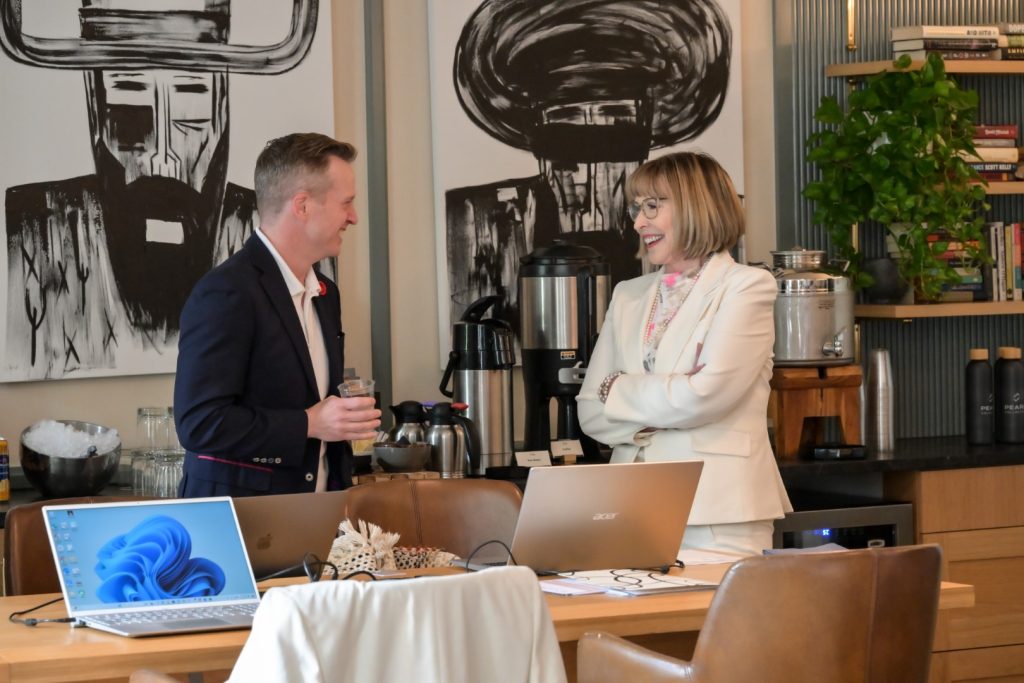
9. Are You Living a Life of Play and Rest?
We all need balance in our lives. And yet many have forgotten how to have fun, get re-energized and then maximize that energy.
CLG points out that conscious play is not serious. If it causes stress and worry, then it is not truly “play”. Watch children and animals and you will see that they don’t take play seriously. You can focus and exert energy without including hard work and struggle. Rather than resist, use improvisation! Adopt the cardinal rule of improvisation: “YES, AND.” This means that you say yes, and then keep going with the flow, rather than declining or saying no. Conscious leaders use this approach rather than trying to control what life is giving them. With other members of their team they adapt, create, and change when approaching the uncertainties of life. They do this using the creativity and playfulness of improvisation.
Don’t forget laughter – genuine playful laughter that is contagious and infectious. It is a key gauge of how much play is going on both by the leader and the team. Do you remember how cathartic an uncontrollable laugh is? Aim for that feeling! People work and play differently. Refer to Stuart Brown’s book Play to identify which of his eight play personalities is your dominant mode of play. This way, you can figure out how to maximize your own play time.
Research has shown that firms whose employees rested for at least 30 minutes per day were up to 35% more productive. Rest and play should not be considered luxuries your firm can’t afford. Like recharging your phone when it has low battery, you need to recharge your mind and body if you want to accomplish more.
Make it a habit for you and your team to take a break during the workday. Go for a walk, take a nap, engage in creative play – whatever relaxes you. You will come back to work more productive. Add to that by prioritizing, eliminating multitasking, and checking email later in the morning.
Fight the workaholic impulse. Just like any addiction, it takes a strong commitment to break. Make it a priority for you and your team to incorporate play and rest in your daily routines – and watch your productivity increase!
10. Exploring the Opposite
The CLG finds most challenges with which businesses struggle come from people believing they are right. Right in how they perceive situations, one another, or themselves.
Select an issue in your life with which you are struggling. If you dig a bit deeper, you will most likely find that your desire to be right about the issue is the underlying problem. It might relate to your need to control how your team communicates with you. Are you sure the way you feel they should communicate is the right way? Often what causes us aggravation is the need to be right – the “my way or the highway” mindset.
One reason we suggest the Kolbe A Index to our clients is that it measures your instinctive way of doing things – your method of operation. Often after taking the assessment, people find their results relieve their frustration. Suddenly they realize they have been forcing themselves to be something they are not. As the CLG points out, it isn’t the issue that causes frustration and pain, but your interpretation of it. You are pushing yourself to act in opposition to your instinctive method of operation and that causes frustration. Their advice: realize that life doesn’t have a label until we give it one.
Aim to be a conscious leader. They take responsibility for being the labeler of life and learn to question all the labels. The CLG recommends The Work by Byron Katie. She created a simple way to help people examine the beliefs that cause stressful thoughts and become curious by remaining unattached to any outcome.
Conscious leaders do not let egos get in the way. They stay open to learning and questioning what is causing those stressful thoughts. Remind yourself that “One point of view is too small for the whole truth”.
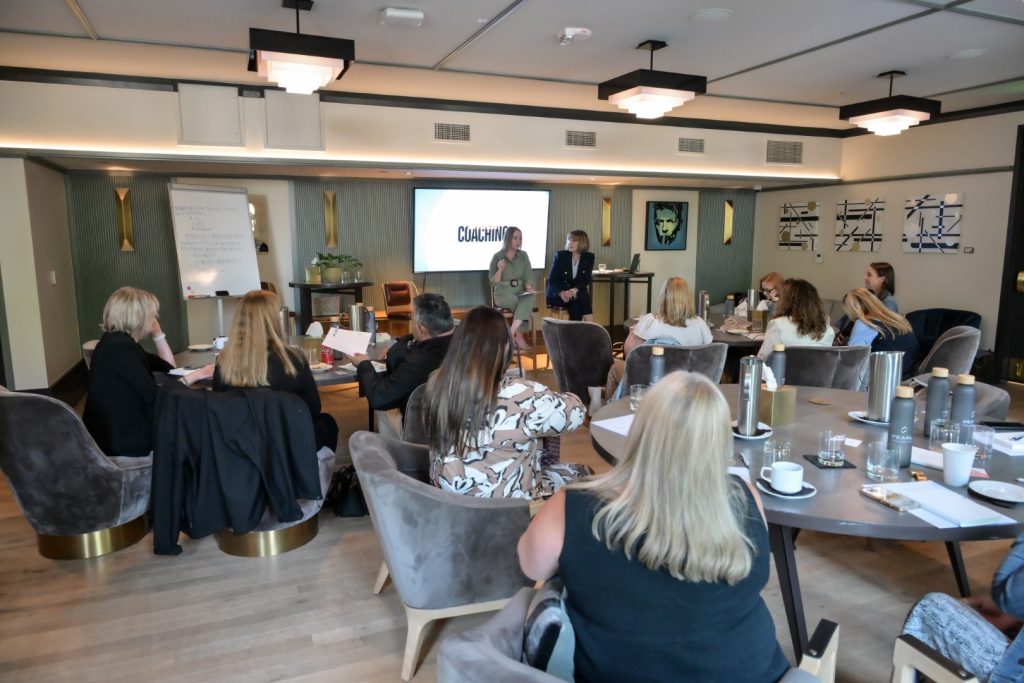
11. Commit to Being the Source of Your Approval, Control, and Security
The CLG states that all “wants” regardless of their size are actually just 3 core wants: approval, control and security.
Desire for security comes from the deepest want for physical survival. Approval also comes from the desire to survive – if they approve of me, they won’t kill me. Desire for control comes from the belief that if you can’t get security through approval, you’ll get it through control.
All our dreams, challenges, desires, complaints, goals, etc. are simply “wants”. And people want a great deal!
If you don’t believe you have security, you will always look for it “out there” and your decisions and actions will reflect that. If you don’t believe you have approval, then you will always be seeking approval from others and your actions will focus on that. And finally, if you believe you lack control then you will always be seeking to control others, circumstances and yourself.
This “wanting” leads to multiple beliefs and behaviors – the opposite of conscious leadership – and comes from a belief in lack.
Hale Dwoskin is the teacher of the Sedona Method, a simple technique for dealing with a belief in lack. He states, “You cannot go anywhere to get what you already have, and you cannot do anything to become what you already are.” Look within.
Many think their core want is happiness, but the CLG points out that happiness for most people is a result of feeling they have security, approval and control. So, they recommend looking under the desire for happiness and seeing which of the 3 core wants is missing. Discover the root cause of your desire.
Leaders who operate from the belief of lack move through the world from fear. Leaders who believe they are whole move in the world from love and creativity. Pain in life is not optional but suffering is. If you keep seeking and wanting what you believe you don’t have, you suffer. Instead source approval, control and security from within and you can move through the challenges of life peacefully and with joy and love.
12. Conscious Leaders Have an Attitude of Having Enough
Conscious leaders commit to an attitude of abundance rather than scarcity. This mentality means a mindset of having enough time, energy, space, money, love and resources and is challenging for many. Rather than focusing on each specific area, concentrate on the overall experience of enough rather than lack.
Scarcity mentality influences leaders to spend energy on getting “their share” as they fear not having enough. Whether it’s time, money, relationships, or anything else. It can creep into small areas of daily life; not enough time to exercise, not enough sleep, not enough help in the office. John Maxwell shares: “You must manage your thought life daily and then you can manage your life.” Managing your thoughts takes focus and work but remind yourself that an abundance mentality attracts abundance and a scarcity mentality attracts scarcity. Either way, it can become a self-fulfilling prophecy.
Awareness of competition is a positive but viewing everything as competition can stunt your personal and professional growth. You begin viewing your time as too valuable to have others waste it. Or your energy is too important to spend it working with others. Or there are not enough clients to go around. If these habits ever creep in, step back and commit to living from an attitude of abundance.
When you use a different reference point, scarcity belief begins to disappear. With an abundance mentality you view sufficiency as an experience, a way of thinking. Changing mindset is not always easy. Starting each day with breathing exercises and meditation can be helpful to the flow of your day in general, but particularly when needing to change your mindset. Rather than scarcity and comparison to others, focus instead on gratitude for what you have.
Redirect any energy you might have used in a scarcity mentality towards a grateful mentality and a belief in abundance mentality. Change your mindset and you can change your world.
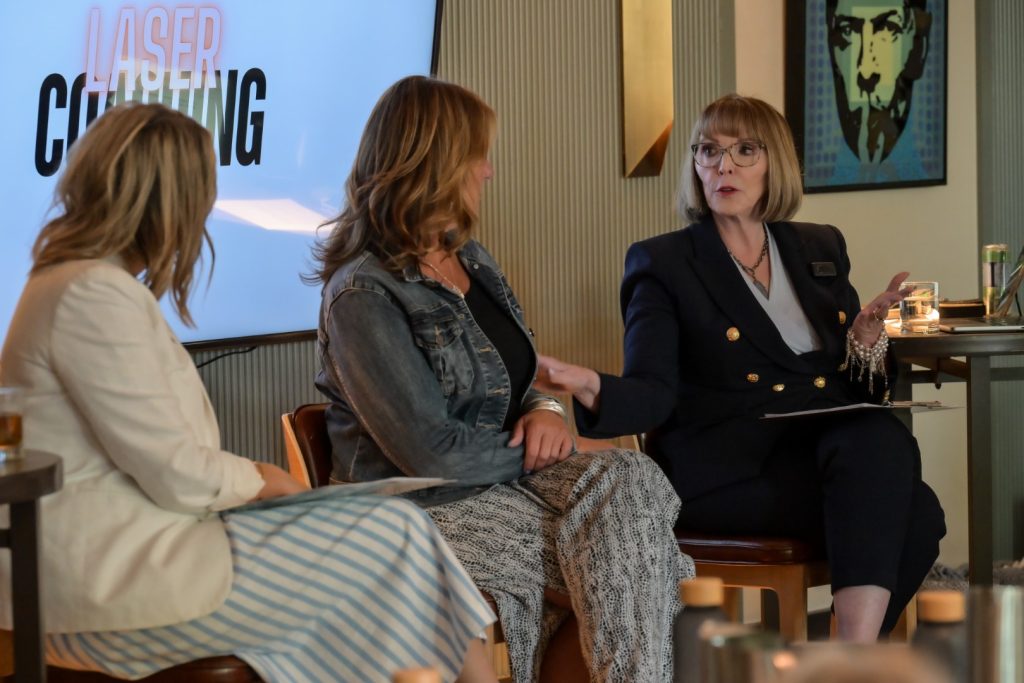
13. Experiencing the World as an Ally
When challenges with people and circumstances arise, unconscious “To Me” leaders view them as either on their side or blocking what they want. They see the person or situation as preventing them from reaching their goals. It becomes a “with me or against me” mentality.
This skill to identify and sort is positive in everyday life to keep us from being overwhelmed. But the “with me or against me” mentality can be a negative for leaders and consumes valuable energy.
Conscious leaders shift from seeing comparison and competition to viewing everyone, including themselves, as valuable allies in learning and growth opportunities. It may be that a coach, networking group or advisory board will provide the relationship of being allies. But CLG encourages leaders to expand further and include those whom you may view as adversarial. Try viewing them as “for you” and opportunities for your personal growth.
When involved in negotiations, view the person on the other side of the table as a facilitator to help you clarify what you truly value. Challenges that arise within your team may offer insight into changes or adjustments that need to be made. At the very least it may cause you to see the other side and possibly change and grow.
Obstacles can also be the force needed for new ideas to emerge. When old processes and procedures break down, see it as an alert that new ones may be needed. Or maybe the communication breakdown on a job alerts you to the need for changes in processes.
To practice this commitment, ask yourself this question: “Would I be willing to see this person and these circumstances as an ally for my learning?” If you answer “yes”, then ask “What experiences would I have missed out on without this person/circumstance?”
Conscious leadership is a choice. Will you choose to embrace this commitment?
14. Creating Win-For-All Solutions
Unconscious leaders create win/lose solutions for whatever challenges or opportunities come their way. Conscious leaders, on the other hand, commit to creating win-for-all solutions.
Release any scarcity mentality where you see life as a pie of fixed resources in constant competition with each other. That means everything – money, energy, time, etc. – is competing with everything else. That forces you to choose between only two choices – competing or compromising.
Commit instead to creating win-for-all solutions. Rather than looking through the lens of a “To Me” mindset or a “By Me” mindset, try a third option – collaboration. Win-for-all solutions also involve many of the previous Commitments of Conscious Leadership.
From Commitment 4, use candor. Approach solutions opening with full transparency. Focus on sufficiency from Commitment 12. Believe that you don’t need to compete for resource. There are enough for all. Remember from Commitment 13 that you are allies in learning to be able to co-create solutions that work perfectly for all.
Finally, encourage a commitment to curiosity – Commitment 1 – the foundation of win-for-all solutions. Designers are in a creative business, so incorporate a sense of wonder, creativity and curiosity along with analytical thinking. Exchange negativity for a “what if” mindset.
To practice this commitment, first identify the challenge or issue. Then be open and candid and brainstorm what several win/lose solutions would look like. If all are willing, claim responsibility from Commitment 1. Get curious and see what win-for-all solutions would look like. Then create an action plan. Questions suggested to support win-for-all solutions include:
- Are we committed to seeing each other as equals and allies in this collaboration?
- What is the biggest idea that our teamwork could create?
- How do we need to change to create this vision?
- What do we need to let go of to create this vision?
Focus on becoming a conscious leader committed to creating a culture promoting win-for-all solutions. You will find that the energy that will result will lead to greater success for your company and the ability for everyone to thrive.
15. Being the Resolution
If you are committed to becoming a conscious leader, focus on becoming the resolution – not the problem. Being the resolution offers the opportunity to incorporate a variety of conscious leadership commitments previously covered.
Remember, conscious leadership operates above the line – being open, curious, and committed to learning. Whereas below-the-line leadership is closed, defensive, and committed to being right. The CLG also reminds us that the Four Ways of Leading model shows the states of consciousness leaders operate in as To Me, By Me, Through Me, and As Me. As leaders, focus on the shift from To Me to By Me. Using that awareness, when you commit to being the resolution or the solution needed, you view what is missing in the world as an invitation to become what is required. Leaders who operate below the line in a To Me mentality don’t commit to solutions. They respond to challenges with apathy or resentment, doing nothing to look for solutions or resolutions. Or they just blame others.
This reaction is not unusual. Many leaders have spent years problem-solving, delivering results and pulling people along. They were probably doing this as part of the victim-villain-hero drama triangle. Often done from a desire for approval, control, security and a scarcity mentality, it often leads to burnout as it’s an exhausting mindset. That can cause a swing in the opposite direction to complete indifference.
Conscious leaders identify what is missing – and see challenges as opportunities. Conscious leaders then focus on resolutions and solutions. As designers you are problem solvers so it is what you should do best!
To practice this commitment, conscious leaders pay attention to their world – at work or at home – and allow something that is missing to come to their attention. They see what might be missing and listen to their whole body to determine if they want to accept the invitation. Then they move forward and go and do.
As you become adept at moving from To Me to By Me consciousness, you begin to see everything in both your work and personal worlds as whole, perfect and complete just as it is. There is no lack. By mastering these commitments, conscious leaders are able to become the resolution and offer greater productivity, efficiency, grace and beauty – a true problem solver.
